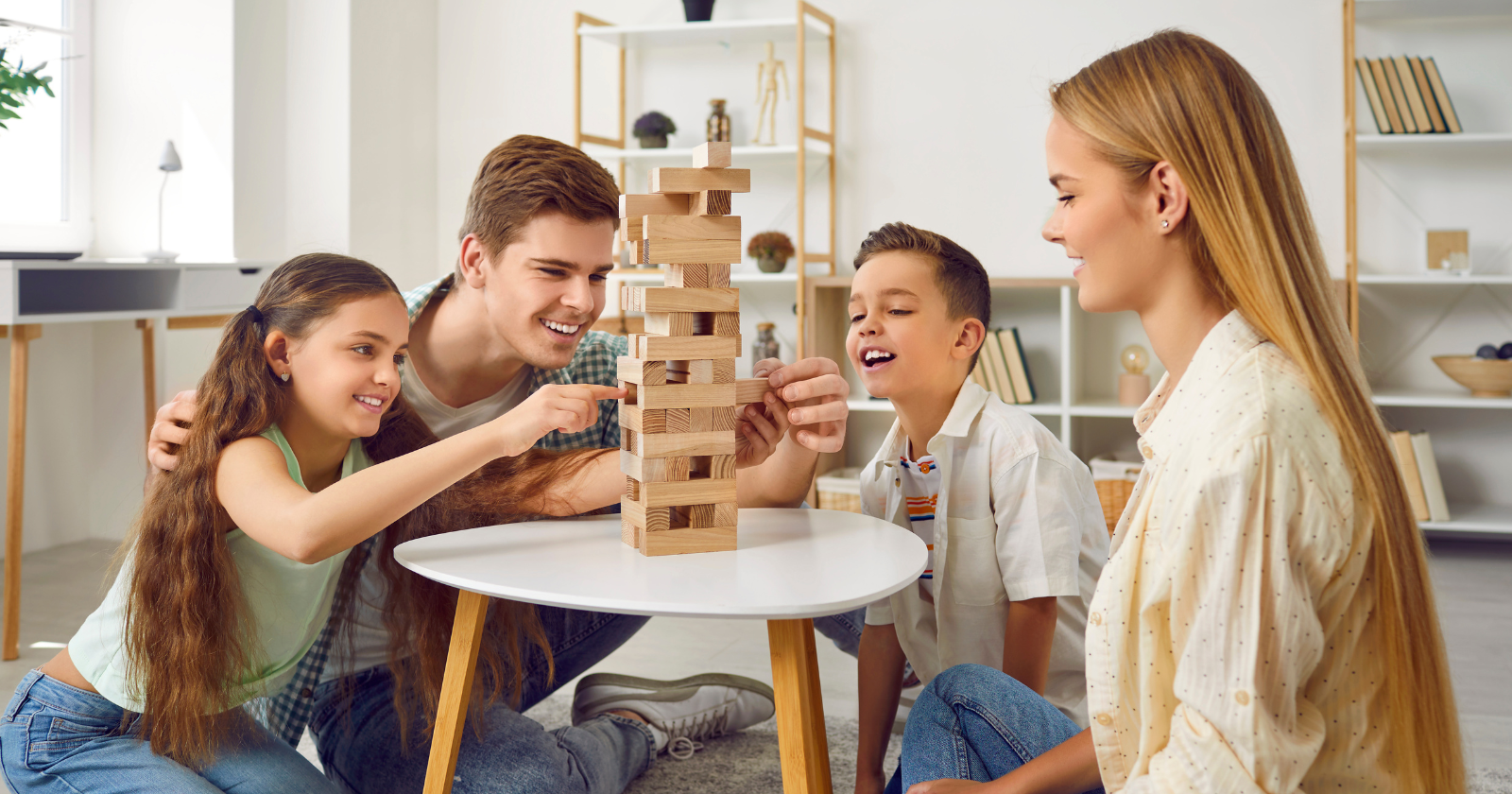When people think about creating happy memories for their children, they often picture big-ticket experiences—Disney trips, expensive holidays, or elaborate birthday parties.
Those can be fun, sure, but they’re not really the things kids carry with them into adulthood. What children remember most are the small, repeated moments of connection — the rituals that weave joy and security into their everyday lives.
As a mom myself and an early childhood educator, I’ve seen firsthand how much children thrive on consistency and play.
Traditions, however simple, that make them feel safe, seen, and loved are more important than any kind of grand gesture a parent could make. These little rituals become anchors in their memory, reminding them of home long after they’ve grown.
Here are seven playful family rituals that will help your kids remember their childhood with warmth.
1. A weekly family game night
There’s something powerful about having one night a week where the whole family puts everything aside and gathers to play.
It doesn’t have to be complicated—board games, card games, charades, or even made-up games will do. What matters is the laughter, the inside jokes, and the sense that everyone belongs.
Now that my kids are older, if you ask them what their favorite childhood moments were, they’d always mention our Friday game nights — and boy, we did try out a lot of games. Uno, Monopoly, Scrabble, Pictionary…we had a pretty sizeable collection of board games.
No matter how stressful our week was, we all knew that Friday nights were reliable — it was going to be fun, by hook or by crook.
And that’s the point of it all. Those simple rituals gave them something to look forward to, something steady.
Psychologists highlight that consistent family rituals help children develop stronger emotional bonds and provide a sense of stability.
For kids, stability equals safety. And safety creates the foundation for joy. A weekly game night becomes more than a game; it becomes a memory scaffold they’ll carry into adulthood.
2. Cooking (and sometimes making a mess) together
Cooking with kids can feel like chaos. Flour on the counters, mismatched ingredients, questionable results.
But here’s the thing — children don’t remember the mess, they remember the laughter. Inviting them into the kitchen, even in small ways, builds confidence and connection.
As a mom, I’ve learned that my kids light up when they get to stir, sprinkle, or taste-test. Pancake mornings in our house are especially treasured.
The pancakes aren’t perfect — sometimes they’re a little burnt or lopsided — but they’re ours. And my kids will someday remember the smell of batter sizzling on Saturday mornings more vividly than any fancy meal out.
3. Evening walks or bedtime rituals
One of the simplest yet most powerful traditions you can start is an evening ritual.
- People who are quietly miserable in their relationship often display these 8 behaviors - Global English Editing
- Psychology says people who organize their pantry regularly have these 7 unique traits - Global English Editing
- 18 small habits that reveal a lot about someone’s character - Global English Editing
For some families, it’s a nightly walk around the block. For others, it’s reading together before bed. These moments create a rhythm kids come to rely on.
In my case, both as a daughter and a mom, I’ve always treasured bedtime reading.
My own mother was a busy woman, but the fact that she always read to me before bed, no matter how tired she was, sent the message that I was loved. That I was worth the time and effort. And hopefully, I’ve passed that message along to my own children as well.
Aside from that, reading the same books again and again gave us catchphrases that slipped into our daily life (e.g. “I’ll love you forever, I’ll like you for always…”)
Even now, my children sometimes quote lines from bedtime stories when we least expect it, and it makes us all smile.
4. Seasonal traditions, no matter how small
You don’t have to reinvent the wheel every season. Small, repeatable traditions are enough to create lasting joy.
Maybe you always carve pumpkins together in October, make hot chocolate on the first snowy day, or have a picnic every spring. These little markers give kids something to anticipate.
Growing up, my own family had a tradition of baking cookies on the first day of December. It wasn’t elaborate, but even now, the smell of cookies baking instantly brings me back to childhood.
I’ve passed the same ritual on to my kids, and to this day, it’s like a family signal that cozy season has begun.
Research on family rituals shows they strengthen identity and continuity. Children who grow up with traditions feel more rooted, more connected to both their family and their culture. They’re also more likely to pass these rituals on to their own children someday.
5. Making up your own silly celebrations
Kids love when parents get playful. That’s why one of the best ways to create memorable rituals is to invent your own celebrations.
Maybe it’s a dance party every time it rains, or making ice cream sundaes on the last day of school, or creating a “backwards dinner” once a month where you start with dessert.
As a teacher, I could always tell which students came from homes where play was valued. Those kids were more flexible, more willing to try new things, and quicker to laugh at themselves.
Aside from creating fun memories, these silly celebrations build resilience by teaching kids that joy can be found anywhere, even in the ordinary.
The beauty of these rituals is that they don’t need to be expensive or complicated. In fact, the sillier and simpler, the better. They show kids that family life doesn’t have to be serious to be meaningful.
6. Family “Yes Day (with limits)”
Once in a while, choose a day where the kids get to call the shots—within safe, reasonable boundaries, of course.
They pick the meals, the activities, maybe even what order the day unfolds in. It doesn’t have to be extravagant; sometimes it means eating breakfast for dinner, building a fort in the living room, or spending the afternoon at the park instead of running errands.
What makes this ritual stand out is the sense of agency it gives children. Developmental research shows that when kids are given age-appropriate control and decision-making opportunities, they feel more competent and connected.
It also flips the script—parents step into a playful role of saying “yes” instead of setting limits, which builds trust and delight.
As a mom, you might find the chaos amusingly unpredictable, but kids remember it as magical. They’ll recall the day when the rules bent in their favor, when their voice carried weight, and when their family life felt extra fun and flexible.
Final thoughts
Playful family rituals don’t have to cost money or take elaborate planning. In fact, the simplest ones are often the most enduring.
A weekly game night, bedtime stories, pajama breakfasts, silly traditions—these are the moments kids carry with them, the memories they turn over in their minds when they think about what “home” felt like.
All this to say, what matters most to kids isn’t perfection, it’s presence. They’ll forget the expensive toys. They won’t remember every outing. But they will remember the laughter, the stories, the pancakes, and the times you chose play over pressure.
If you want your kids to look back on their childhood with warmth, start with one ritual. Make it playful, keep it simple, and repeat it often. Over time, those little sparks of joy will weave into the kind of memories that last a lifetime.



